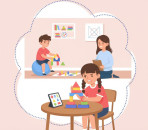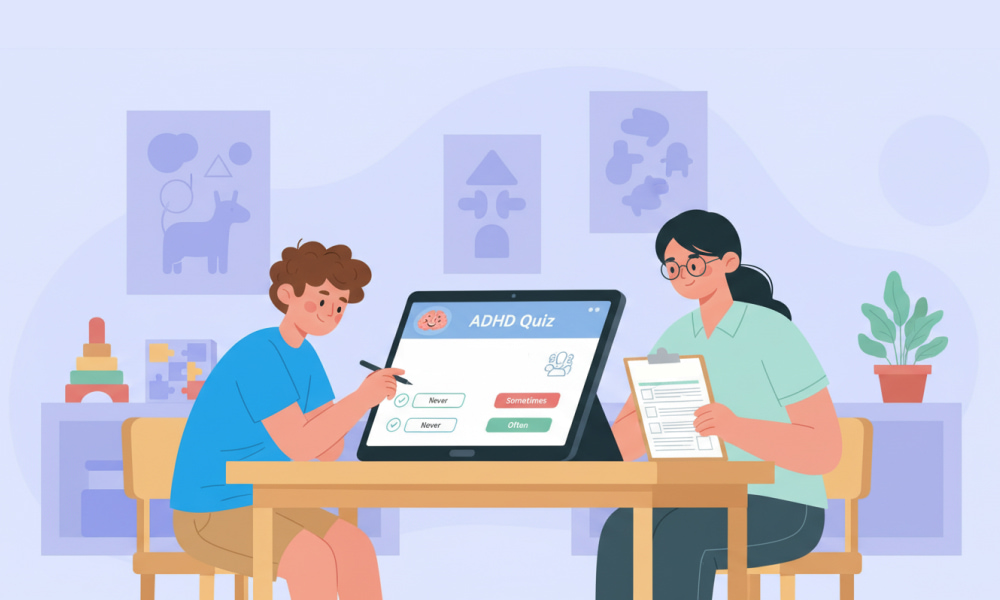Online Child ADHD Test: Take Screening & Assessment
New Updates



Take ADHD Test for Children Online
Get StartedADHD in Children: Assess Your Child’s Symptoms Today
Attention-deficit/hyperactivity disorder is a neurodevelopmental condition rooted in differences across brain networks governing attention, motivation, and self-regulation. Families often notice patterns of inconsistent focus, bursts of energy, or impulsive choices, yet these behaviors can vary by context. Clinicians emphasize that ADHD is dimensional, frequently coexisting with learning differences, anxiety, or giftedness, and that outcomes improve when adults respond with clarity, empathy, and structure. The goal is not to “fix” a child but to create environments where curiosity and effort can flourish alongside support for executive skills.
Labels can be useful when they unlock resources, but they can also feel reductive if they obscure individuality. In everyday conversation, the phrase ADHD children may invite stereotypes about hyperactivity, while many kids primarily struggle with sustained attention and working memory. Parents and teachers who look beyond clichés tend to notice strengths such as inventive problem-solving, humor, and persistence in areas of deep interest. When caring adults align expectations with developmental needs, kids build confidence without losing their spark.

Assessment starts with stories: what happens at home, in class, and during play, and how those experiences change with routines, sleep, and stress. During intake, clinicians may ask families to complete a child ADHD questionnaire to gather observations from multiple settings, including school. For older youth and teens, some practices may also reference the childhood ADHD symptoms scale self report as a complement to teacher and caregiver ratings, adding the child’s voice to the full picture. When that narrative is paired with standardized tools, the result is a more nuanced understanding of daily functioning.
Benefits, Bright Spots, and Everyday Wins
Amid challenges with distractibility or impulsivity, many kids bring unmatched creativity, spontaneity, and resilience to their communities. Strength-based approaches harness high energy for productive pursuits, spotlight curiosity, and channel novelty-seeking into safe, meaningful exploration. Families who reframe “misbehavior” as a skill gap can replace criticism with coaching, which often reduces friction and strengthens relationships. Over time, this perspective helps children build self-advocacy, flexible thinking, and courage to attempt hard things, even when setbacks happen.
- Intrinsic motivation thrives when goals connect to interests and clear feedback.
- Movement and sensory tools transform fidgeting into focus and stamina.
- Visual schedules and timers reduce debates and improve follow-through.
- Short sprints of effort, spaced out by brief breaks, protect attention.
- Celebrating progress, not perfection, boosts persistence and morale.
Care teams often incorporate brief rating scales to track growth and guide coaching plans. In schools, a team might review trends that emerge from a ADHD questionnaire kids as accommodations are refined throughout the term. For families exploring screeners at home, a simple game-like format such as a ADHD quiz kids can spark conversation about behaviors without blame. When external metrics corroborate what parents notice, a practical next step might include a skills-focused plan informed by a kids ADHD test result, followed by classroom supports and routine tweaks.
How Evaluation Works: From Screening to Diagnosis
Thorough evaluation is a multi-method, multi-informant process that triangulates history, observations, behavior ratings, and performance tasks. Primary care providers coordinate referrals, schools supply collateral data, and psychologists integrate all sources into a coherent formulation. Because attention varies with context, the most reliable conclusions come from patterns that repeat across time, settings, and tasks. This approach prevents over- or under-identification and ensures that support targets the root cause rather than only visible behaviors.

Families often start with their pediatrician for coordination and education, and then proceed to specialists as needed based on complexity. In many communities, access improves when a clinic centralizes scheduling for pediatric ADHD testing alongside learning and mood assessments, streamlining care. While waitlists can be frustrating, interim strategies like classroom accommodations, sleep hygiene, and parent coaching can reduce stress right away.
| Pathway | Who conducts it | Timeframe | What it includes | Best for | Watch-outs |
|---|---|---|---|---|---|
| Primary care screening | Pediatrician and nurse | 1–2 visits | History, rating scales, school input | Initial triage and referrals | May miss learning issues without further testing |
| School-based evaluation | School psychologist team | 4–8 weeks | Observations, academic testing, accommodations | Educational planning and supports | Not a medical diagnosis; scope varies by district |
| Comprehensive neuropsychology | Licensed psychologist | 1–2 days + feedback | Cognitive, attention, executive, learning profiles | Complex cases and differential diagnosis | Cost and waitlists; requires follow-through for services |
Clinics combine history with performance tasks to confirm patterns and rule out look-alikes such as anxiety, sleep disorders, or vision issues. For clarity on next steps, many providers outline the scope and limits of ADHD testing for kids so expectations match the referral question. When a profile is mixed or subtle, a psychologist may add a targeted child ADHD assessment test to refine hypotheses before writing recommendations.
Digital Tools, Screeners, and Practical Next Steps
Digital checklists and reaction-time tasks can flag attention concerns quickly, and they help families document what they are seeing day to day. These tools are best used as conversation starters that guide goal-setting, classroom accommodations, or referrals. Because results can be influenced by sleep, anxiety, and motivation, it is wise to pair home screeners with teacher feedback and a primary care visit. When patterns persist across settings, a referral for a full evaluation provides the context needed for a confident plan.
Some clinics now offer hybrid models that weave telehealth with in-person testing to improve access while maintaining rigor. For families in remote areas, curated platforms that offer online ADHD testing for children can expedite triage before a local appointment becomes available. When budgets are tight, parents sometimes begin with a resource labeled as a ADHD test online free kids to organize observations and questions for the pediatrician. Matching tool to purpose prevents disappointment and speeds up the path to tailored support. Modern screeners are only one piece of a broader puzzle, and they open doors when used judiciously and with guidance. If you’re documenting concerns to share at school, a reputable free online ADHD test for kids can provide a snapshot that complements teacher ratings. With that baseline in hand, you can set specific goals, such as smoother morning routines, stronger homework habits, or calmer transitions between tasks.
Take ADHD Test for Children Online
Get StartedFrequently Asked Questions
-
How is ADHD diagnosed, and who can make the diagnosis?
Diagnosis typically involves a licensed clinician who integrates history, rating scales, observations, and performance measures to confirm patterns across settings. In many regions, policies outline that comprehensive conclusions fall under the scope of ADHD testing in children, with primary care and psychology collaborating to ensure accuracy.
-
Are quick quizzes useful, or should we skip them?
Brief quizzes can help organize observations and start a focused discussion with your pediatrician or school team. When interpreted cautiously, a simple screener akin to an ADHD test for kids can highlight trends that deserve a deeper look by a clinician.
-
What should we share with our child’s teacher when concerns arise?
Teachers benefit from concrete examples: times of day that are hardest, tasks that trigger frustration, and strategies that have worked at home. Offer short observations, ask for classroom data, and propose a trial of specific supports so progress can be tracked systematically.
-
Which daily habits make the biggest difference for focus and regulation?
Predictable routines, adequate sleep, protein-rich breakfasts, and movement breaks create a strong foundation for learning. Visual schedules, step-by-step checklists, and praise for effort further reduce friction and help kids build self-trust.
-
When should we see a specialist rather than wait and watch?
Seek a specialist if concerns persist across settings for several months, if safety is impacted, or if school performance slips despite routine supports. While a playful screener like a does my child have ADHD quiz can highlight patterns to discuss, urgent issues warrant direct clinical evaluation without delay.
 Comprehensive Guide to ADHD Questionnaires for Children
Comprehensive Guide to ADHD Questionnaires for Children